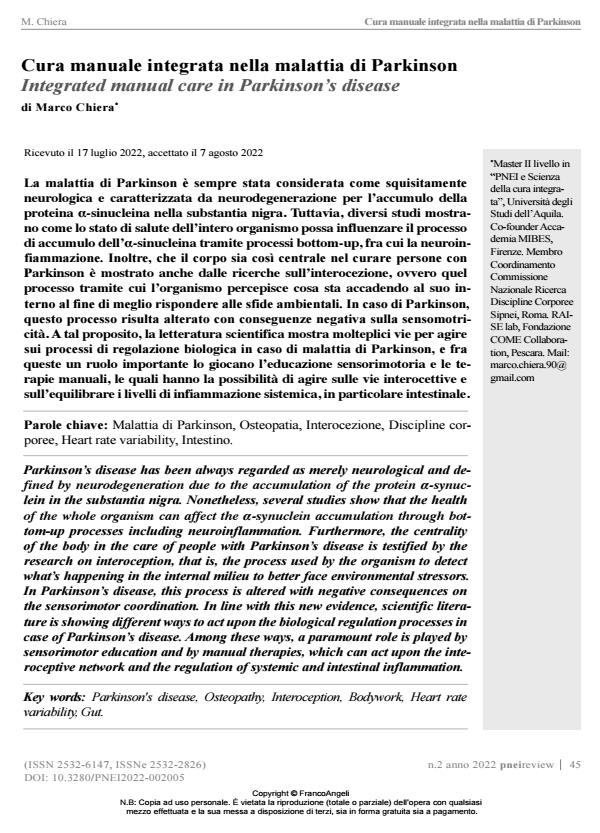Integrated manual care in Parkinson’s disease
Journal title PNEI REVIEW
Author/s Marco Chiera
Publishing Year 2022 Issue 2022/2
Language Italian Pages 12 P. 45-56 File size 151 KB
DOI 10.3280/PNEI2022-002005
DOI is like a bar code for intellectual property: to have more infomation
click here
Below, you can see the article first page
If you want to buy this article in PDF format, you can do it, following the instructions to buy download credits

FrancoAngeli is member of Publishers International Linking Association, Inc (PILA), a not-for-profit association which run the CrossRef service enabling links to and from online scholarly content.
Parkinson’s disease has been always regarded as merely neurological and defined by neurodegeneration due to the accumulation of the protein a-synuclein in the substantia nigra. Nonetheless, several studies show that the health of the whole organism can affect the a-synuclein accumulation through bot- tom-up processes including neuroinflammation. Furthermore, the centrality of the body in the care of people with Parkinson’s disease is testified by the research on interoception, that is, the process used by the organism to detect what’s happening in the internal milieu to better face environmental stressors. In Parkinson’s disease, this process is altered with negative consequences on the sensorimotor coordination. In line with this new evidence, scientific litera- ture is showing different ways to act upon the biological regulation processes in case of Parkinson’s disease. Among these ways, a paramount role is played by sensorimotor education and by manual therapies, which can act upon the interoceptive network and the regulation of systemic and intestinal inflammation.
Keywords: Parkinson's disease, Osteopathy, Interoception, Bodywork, Heart rate variability, Gut.
Marco Chiera, Cura manuale integrata nella malattia di Parkinson in "PNEI REVIEW" 2/2022, pp 45-56, DOI: 10.3280/PNEI2022-002005